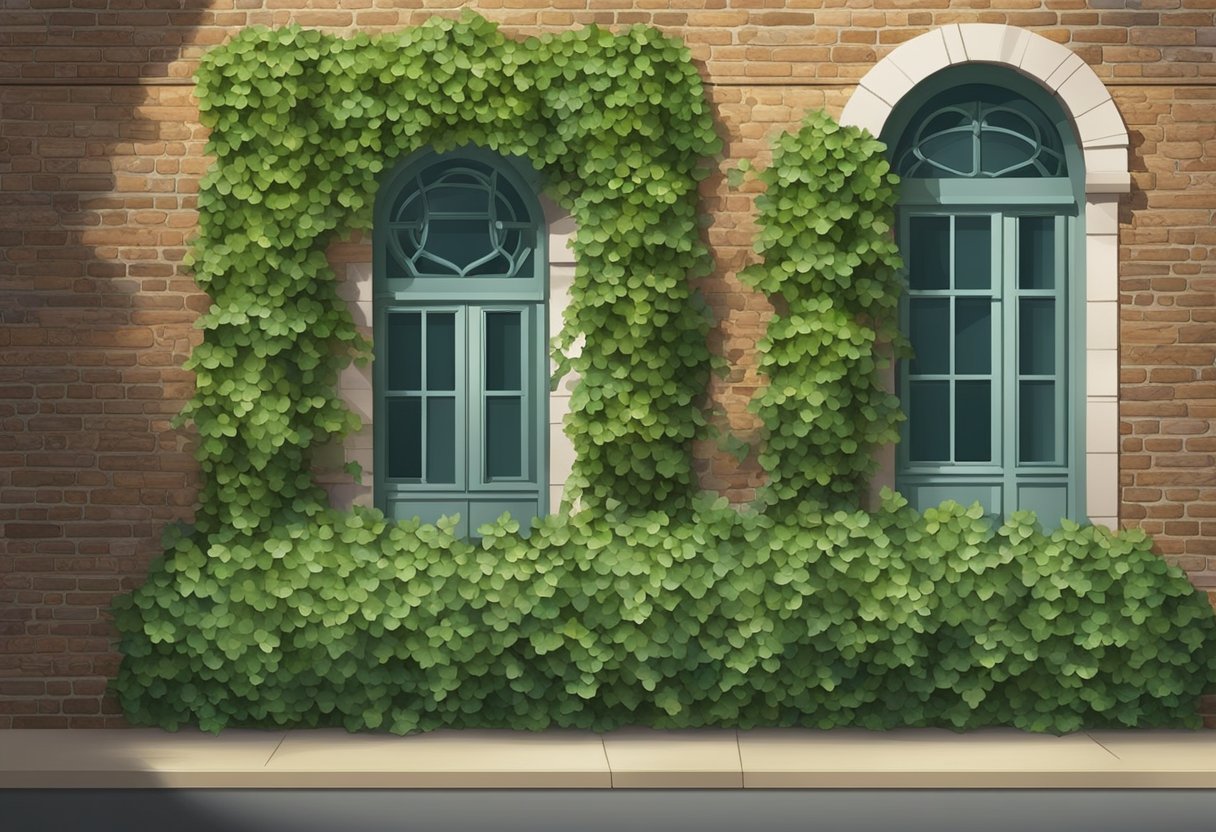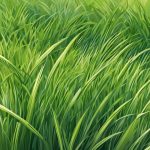Types Of Ivy
Ivy is a popular plant that can be found in many gardens and homes. This versatile plant can be used as a ground cover, climber, or houseplant, and comes in a variety of shapes and sizes. There are many different types of ivy, each with its own unique characteristics and growing habits.
Common types of ivy include English ivy, Algerian ivy, Irish ivy, and Persian ivy. These plants are all evergreen and can be grown both indoors and outdoors. Ivy is a hardy plant that can tolerate a wide range of growing conditions, making it a great choice for novice gardeners.
Ivy growth habits and care can vary depending on the specific type of ivy. Some ivies prefer full sun, while others prefer shade. Regular watering and fertilization are important for healthy growth, and pruning can help control the plant’s size and shape. Ivy can also have an impact on the environment, both positive and negative. It can provide habitat and food for wildlife, but can also become invasive and harm native plants.
Key Takeaways
- Ivy is a versatile plant that can be used as a ground cover, climber, or houseplant.
- Common types of ivy include English, Algerian, Irish, and Persian ivy.
- Proper care and pruning are important for healthy ivy growth, and ivy can have both positive and negative impacts on the environment.
Common Types of Ivy

Ivy is a popular plant that is known for its lush evergreen foliage and rapid growth. There are several types of ivy, each with its unique characteristics. In this section, we will discuss the most common types of ivy and their unique features.
English Ivy (Hedera Helix)
English Ivy is a popular type of ivy that is known for its dark green leaves and its ability to climb walls and trees. It is a great plant for creating a natural and beautiful backdrop in any garden or landscape. English Ivy is also popular as an indoor plant and is known for its air-purifying properties. It is easy to care for and can thrive in a variety of conditions.
Irish Ivy (Hedera Hibernica)
Irish Ivy is a type of ivy that is native to Ireland and is known for its large, glossy leaves. It is a great plant for creating a lush and green backdrop in any garden or landscape. Irish Ivy is also popular as an indoor plant and is known for its air-purifying properties. It is easy to care for and can thrive in a variety of conditions.
Persian Ivy (Hedera Colchica)
Persian Ivy is a type of ivy that is known for its large, glossy leaves and its ability to climb walls and trees. It is a great plant for creating a natural and beautiful backdrop in any garden or landscape. Persian Ivy is also popular as an indoor plant and is known for its air-purifying properties. It is easy to care for and can thrive in a variety of conditions.
Algerian Ivy (Hedera Canariensis)
Algerian Ivy is a type of ivy that is native to North Africa and is known for its large, shiny leaves. It is a great plant for creating a lush and green backdrop in any garden or landscape. Algerian Ivy is also popular as an indoor plant and is known for its air-purifying properties. It is easy to care for and can thrive in a variety of conditions.
Boston Ivy (Parthenocissus Tricuspidata)
Boston Ivy is a type of ivy that is known for its ability to climb walls and trees and its beautiful fall color. It is a great plant for creating a natural and beautiful backdrop in any garden or landscape. Boston Ivy is also popular as an indoor plant and is known for its air-purifying properties. It is easy to care for and can thrive in a variety of conditions.
In conclusion, there are several types of ivy, each with its unique characteristics. Whether you want to create a natural and beautiful backdrop in your garden or landscape or want to enjoy the air-purifying properties of ivy indoors, there is a type of ivy that will suit your needs.
Ivy Growth Habits and Care
Ivy is a versatile and attractive plant that can be grown both indoors and outdoors. It is known for its lush foliage and ability to climb walls, trellises, and other structures. However, like all plants, ivy has specific growth habits and care requirements that must be met in order to thrive.
Sunlight and Shade Preferences
Ivy plants prefer partial to full shade, but they can also tolerate full sun if they are kept well-watered. In fact, ivy grown in full sun may have more vibrant foliage than ivy grown in shade. However, if ivy is grown in full sun, it is important to keep the soil moist to prevent the leaves from scorching.
Soil and Moisture Requirements
Ivy plants prefer moist, well-draining soil that is rich in organic matter. They can tolerate a range of soil types, including sandy, loamy, and clay soils. However, ivy does not tolerate waterlogged soil, so it is important to ensure that the soil is well-draining.
Ivy plants require regular watering to keep the soil moist. However, it is important not to overwater ivy, as this can lead to root rot. To ensure that the soil is moist but not waterlogged, allow the top inch of soil to dry out slightly between waterings.
Pruning and Maintenance
Ivy is a low-maintenance plant that is easy to grow, but it does require some pruning and maintenance to keep it healthy and looking its best. Prune ivy in the spring or summer to remove any dead or damaged foliage and to control its growth. Ivy can be trained to climb walls, trellises, and other structures, but it may require some training and support to keep it growing in the desired direction.
In conclusion, ivy is a beautiful and versatile plant that can be grown both indoors and outdoors. By providing the right amount of sunlight, moisture, and soil conditions, and by pruning and maintaining the plant regularly, you can enjoy the lush foliage and climbing abilities of ivy for years to come.
Ivy as Houseplants and Outdoor Plants
Ivy is a popular plant that can be grown both indoors and outdoors. It is a versatile plant that can be used as ground cover or as a climbing vine on trellises, arbors, and slopes. Ivy is a low-maintenance plant that can add a touch of greenery to any space.
Indoor Ivy Care
Indoor ivy is a great way to bring a touch of greenery into your home. There are many different types of ivy that can be grown indoors, including English Ivy, Algerian Ivy, and Swedish Ivy. These plants are relatively easy to care for and can thrive in a variety of conditions.
When caring for indoor ivy, it is important to keep the soil moist but not waterlogged. The plant should be placed in a location with bright, indirect sunlight. Ivy plants also benefit from occasional misting to increase humidity levels.
Outdoor Ivy Landscaping
Ivy is a popular plant for outdoor landscaping. It can be used as ground cover to create a lush, green carpet or as a climbing vine to cover trellises, arbors, and slopes. There are many different types of ivy that can be grown outdoors, including English Ivy, Algerian Ivy, and Japanese Ivy.
When using ivy as ground cover, it is important to choose a variety that is suited to your climate and soil conditions. Ivy plants generally prefer fertile, moist soil that drains well. When using ivy as a climbing vine, it is important to provide support for the plant to climb on.
Overall, ivy is a versatile and low-maintenance plant that can be used both indoors and outdoors. With proper care and attention, ivy can add a touch of greenery to any space.
Environmental Impact of Ivy
Ivy is a type of evergreen foliage that can be found in a variety of environments. While it is often used as a groundcover or decorative plant, it can also have an impact on the environment. In this section, we will explore the benefits and invasive species concerns related to ivy.
Benefits of Ivy
One of the primary benefits of ivy is its ability to act as a natural air purifier. Ivy has been shown to remove pollutants from the air, making it a valuable addition to urban environments. Additionally, ivy can provide a habitat for wildlife, including birds and insects.
Invasive Species Concerns
Despite its benefits, ivy can also become a weed and an invasive species. When ivy is left unchecked, it can grow rapidly and cover large areas, crowding out native plants and disrupting the local ecosystem. Ivy can also climb trees and other structures, potentially causing damage and creating safety hazards.
To mitigate the risks associated with ivy, it is important to monitor its growth and take steps to control it when necessary. This may include removing ivy from trees and structures, as well as limiting its use as a groundcover in natural areas.
In conclusion, while ivy can have a positive impact on the environment, it is important to be aware of its potential to become an invasive species. By taking steps to control its growth and use, we can ensure that ivy remains a valuable part of our ecosystem without causing harm.
Unique Ivy Varieties and Cultivars
Variegated Ivies
One of the most popular ivy varieties is the variegated ivy. These plants have leaves that are characterized by a mix of two or more colors, usually green and white or cream. The variegated ivy is an excellent choice for those who want to add some color to their garden or home. One example of a variegated ivy is the Goldchild ivy, which has green leaves with yellow edges.
Cultivars for Special Uses
There are several cultivars of ivy that are specifically bred for certain uses. One of these is the Gloire de Marengo, a variety of Algerian ivy that is known for its vigorous growth and lush foliage. This ivy is perfect for covering walls, fences, and other structures. The leaves of the Gloire de Marengo are heart-shaped and have a darker green color with green-grey or cream-colored marbling.
Another cultivar that is bred for a specific use is the Needlepoint ivy. This ivy has small, narrow leaves that are shaped like needles, hence the name. The Needlepoint ivy is perfect for use as a ground cover or for growing in containers. It is also a great choice for those who want to add some texture to their garden.
The Duckfoot ivy is another cultivar that is known for its unique foliage. This ivy has leaves that are shaped like a duck’s foot, hence the name. The Duckfoot ivy is a great choice for those who want to add some interest to their garden or home.
Finally, the Shamrock ivy is a cultivar that is known for its unique three-lobed leaves. This ivy is perfect for use as a ground cover or for growing in containers. It is also a great choice for those who want to add some greenery to their indoor spaces.
Overall, there are many unique and interesting ivy varieties and cultivars available. Whether you are looking for a variegated ivy or a cultivar that is bred for a specific use, there is sure to be an ivy that is perfect for your needs.






